Tree Sapping: Why Is My Tree Leaking Sap?
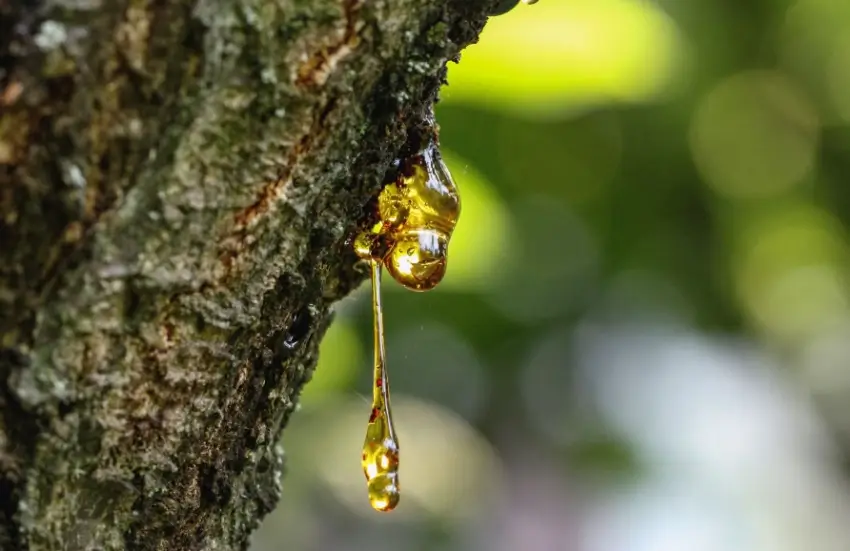
Hockey. Poutine. Being exceptionally nice. Canada is known for a lot of things, but one of our most special exports to the world is maple syrup. Sweet and sticky, syrup is actually a form of tree sap. In fact, many common trees in Canada contain sap. You may even notice sap pooling or even dripping from trees, a phenomenon known as tree sapping.
Why do trees leak sap? In many cases, it’s a natural and healthy behaviour. However, in some instances, tree sapping could indicate a problem, like a pest infestation or fungal infection. If you’ve been wondering, “Why is my tree leaking sap?” it’s important to figure out if your tree is going through a natural process or if you’ve got a sick tree that needs attention.
Table of Contents:
What Causes Sap on Trees?
Sap is a fluid that circulates through a tree’s vascular system. Mainly consisting of water and dissolved sugars, sap also includes small amounts of minerals, hormones, and other organic compounds.
Sap is created through the process of photosynthesis and performs essential functions that support a tree’s health, including:
- Transporting essential nutrients and sugars from the leaves to other parts of the tree
- Providing energy to support the tree’s growth and development
- Protecting against damage (when a tree is injured, the sap can ooze out and harden like a scab)
Why Is My Tree Dripping Sap?
The good news is that if you notice sap oozing out of your tree, it might not be a bad thing. That’s why it’s so important to understand the reasons behind tree sapping and the difference between natural sapping and sapping that indicates the tree is in some distress.
Natural Sapping
In the early spring, many trees, including maples, naturally release sap. As temperatures fluctuate between above and below freezing, pressure builds in the tree, forcing the sap upward from the roots toward the branches. The increased sap flow helps to rehydrate trees after a long winter and gives them the energy to start developing leaves and flowers. This is also the time of year when syrup producers tap their trees to collect sap.
Pruning or Damage
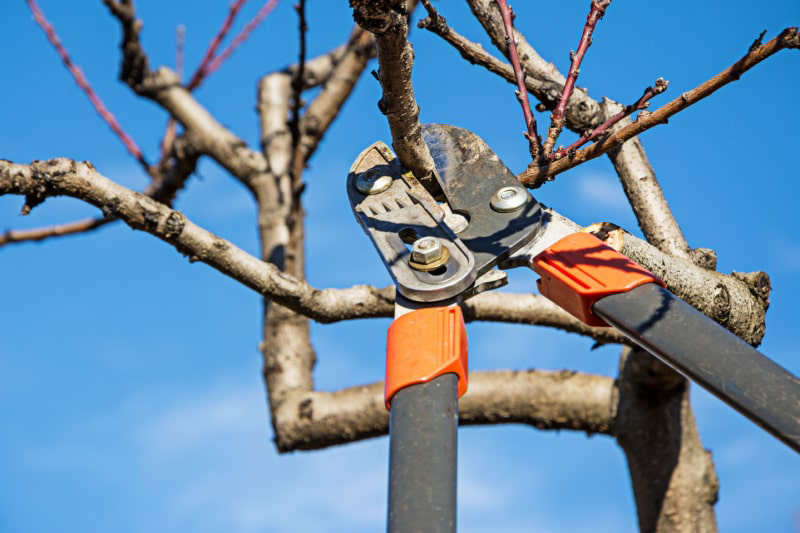
Dripping sap can also be a healing response from trees. When a tree is pruned or experiences damage from storms, animals, or other types of injury, it can release sap to seal the wound and prevent an infection.
Insects
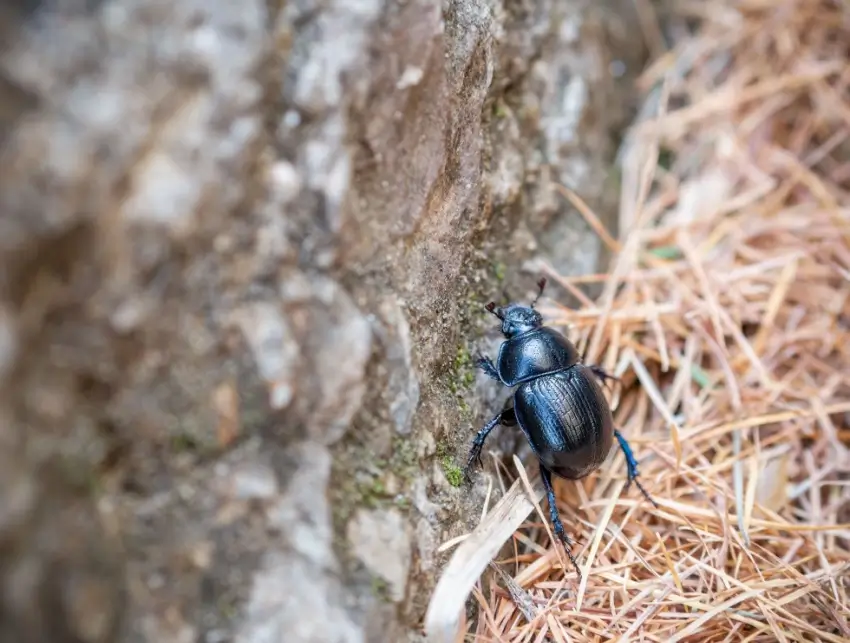
Certain insects, like bark beetles, can drill holes in the bark of a tree, causing the tree to release sap to seal the wound. Other critters, like sapsucker woodpeckers, create holes in specific trees to feed on the nutritious sap.
Fungus and Bacteria
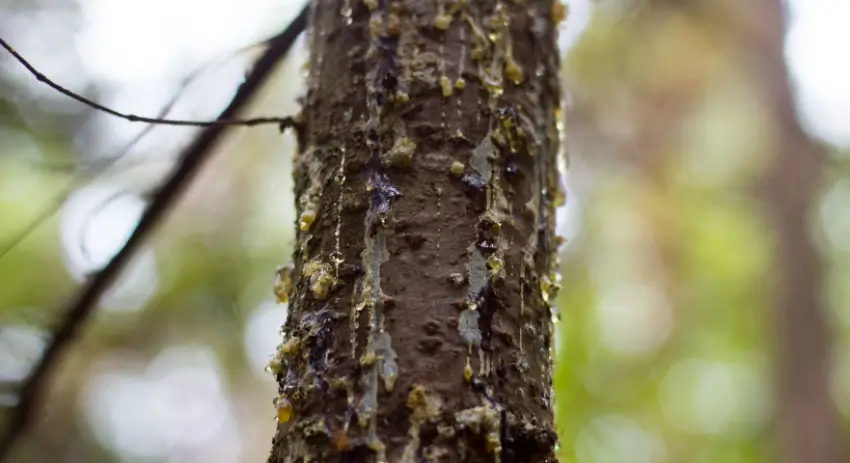
Some fungal or bacterial diseases, such as bacterial wet wood or slime flux, can cause trees to ooze sap. During a fungal or bacterial outbreak, sap will often smell foul and feel slimy. To prevent further damage or worse, have the tree(s) checked and treated by a professional.
Environmental Stress
Drought and extreme temperatures, which many parts of Canada face more frequently, puts a lot of stress on trees, causing them to release sap. Tree sapping helps trees reduce water loss through a process called transpiration. The sap creates sticky, protective layers on leaves or needles, which can help reflect sunlight and conserve moisture.
Trees That Commonly Leak Sap
When you take a trip outside the city, Canada is home to a huge and diverse array of trees. Nearly 180 different species of trees, in fact. While maple trees often come to mind when thinking of sap, many other common types of trees in the Great North also contain sap.
Maple Trees
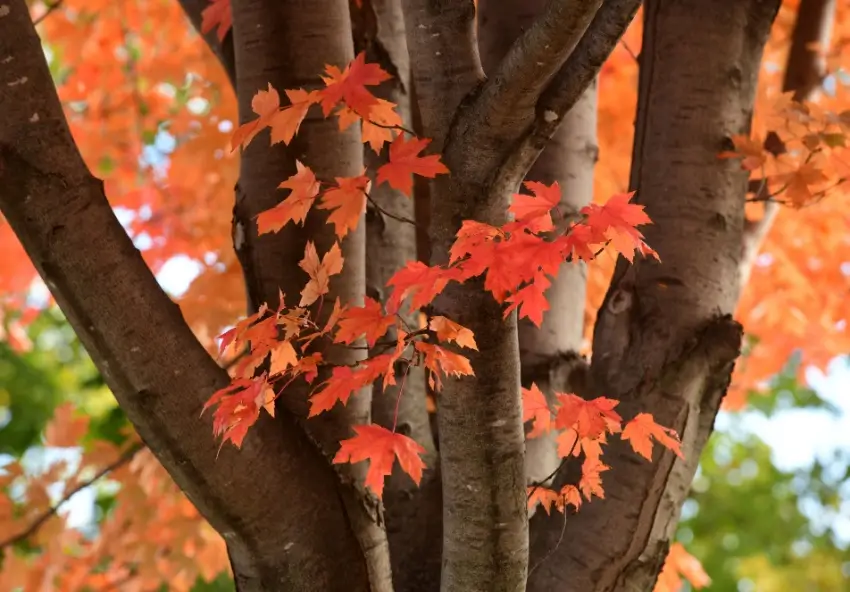
- Sugar maple
- Red maple
- Black maple
- Silver maple
- Manitoba maple
Birch Trees
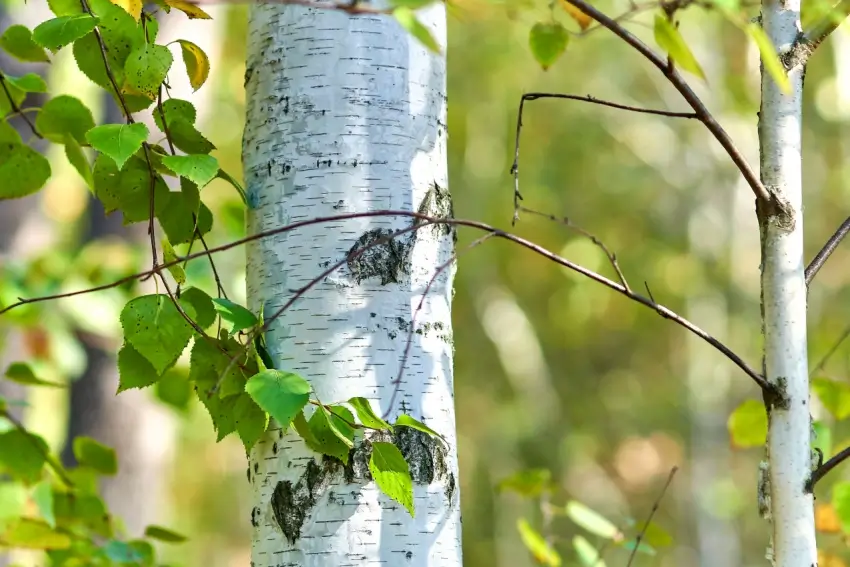
- Paper birch
- Yellow birch
- Black birch
Coniferous Trees
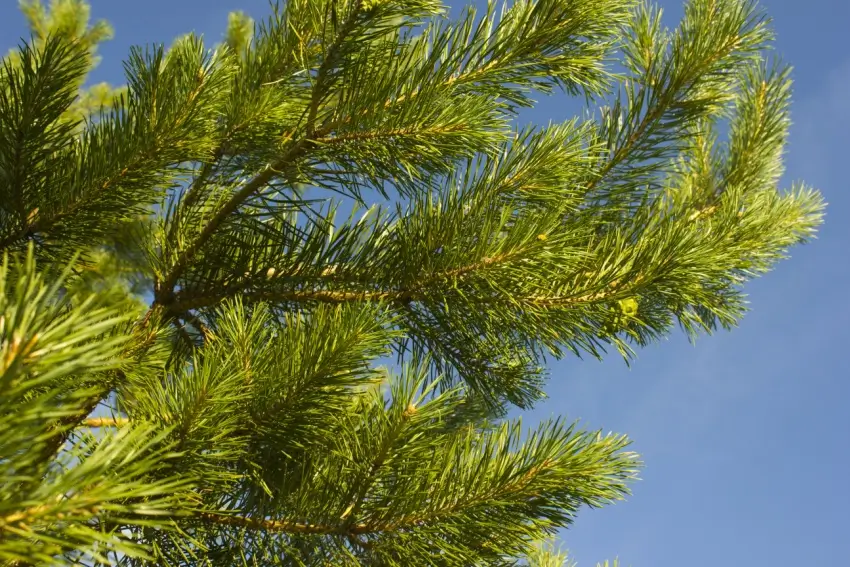
- White pine
- Red pine
- Jack pine
- Black spruce
- White spruce
- Balsam fir
Other Sap Trees
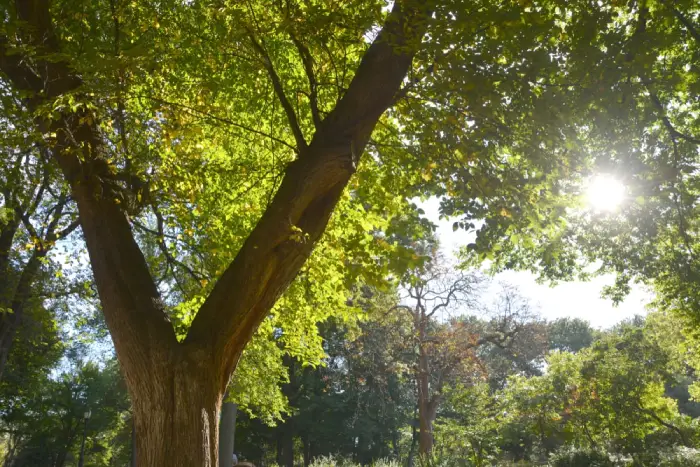
- Walnut
- Hickory
- Elm
- Oak
- Poplar
How to Identify and Diagnose Sap Leaks
Why is your tree leaking sap? Is it a natural response, or is something wrong? You need to be able to figure out the answer so you can take the appropriate action if your tree is giving signs that it needs help. If you notice sap dripping from your trees, consider the following factors to help diagnose the cause.
Time of Year
Most trees naturally release sap in the early spring, especially maple trees. If you notice a lot of sweet, sticky sap appearing on your trees during this time of year, it’s likely that your trees are just doing their natural thing.
Location of Sap Flow
If you notice sap flowing from large, irregular wounds or cracks in the bark, that’s a sign that your tree has undergone damage. Perhaps it lost a limb or was damaged in a storm, or it could be suffering from a pest infestation.
Appearance and Odour
Sap from healthy trees is usually clear or slightly amber in colour and has a neutral or sweet smell. If you notice that the sap is cloudy or discoloured and has a foul odour, chances are the tree is suffering from a bacterial or fungal infection.
Tree Appearance
If a tree appears otherwise healthy, with full foliage and good colour with no obvious signs of stress, the sap flow is probably natural. However, if a tree shows symptoms of distress, like wilting, yellowing, or premature leaf drop, tree sapping may be a sign of an underlying problem.
Pests
Look closely at the sap coming from your tree. If you notice insects, like bark beetles or ants, around the area, you could be dealing with a pest infestation. Inspect your tree for additional signs of damage.
Solutions for Managing Tree Sapping
Now that you know what causes sap on trees, it’s important to effectively manage tree sapping when you come across it. If the tree sap is flowing naturally, just let it be. Your tree is healthy and happy and just going through its natural cycle.
Provide Tree Management and Monitoring
To make sure your trees stay healthy, take a proactive approach to their management. That means providing proper irrigation, fertilization, and mulching. Proper pruning can also limit sap flow from pruning wounds. Healthy trees are better equipped to handle stress and are less likely to experience excessive sap flow.
Monitor your trees regularly. Look for wounds, insect activity, or indications of bacterial or fungal infections.
Keep Your Trees Healthy and Thriving
While trees are pretty robust when it comes to surviving the harsh Canadian environment, they still require regular care and maintenance to remain healthy and thrive. If you aren’t able to regularly care for your trees, consider hiring a professional like The Grounds Guys®. Our teams are experienced and knowledgeable when it comes to tree care. We offer residential tree care and maintenance services, as well as commercial tree care, that includes tree pest control, pruning, fertilization, and more.
Keep your trees in tip-top shape. Request a free estimate today!
 Click to call
Click to call


